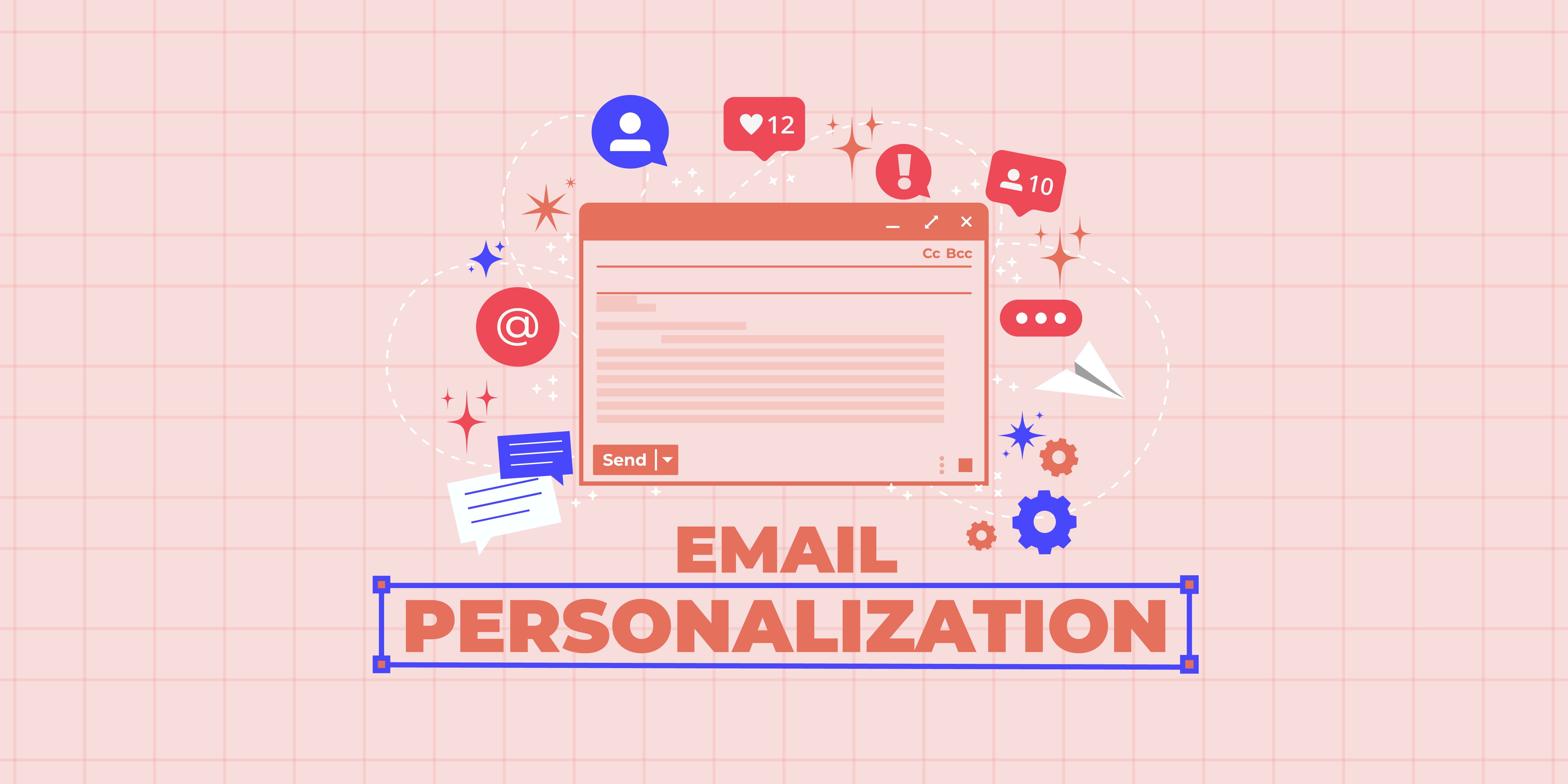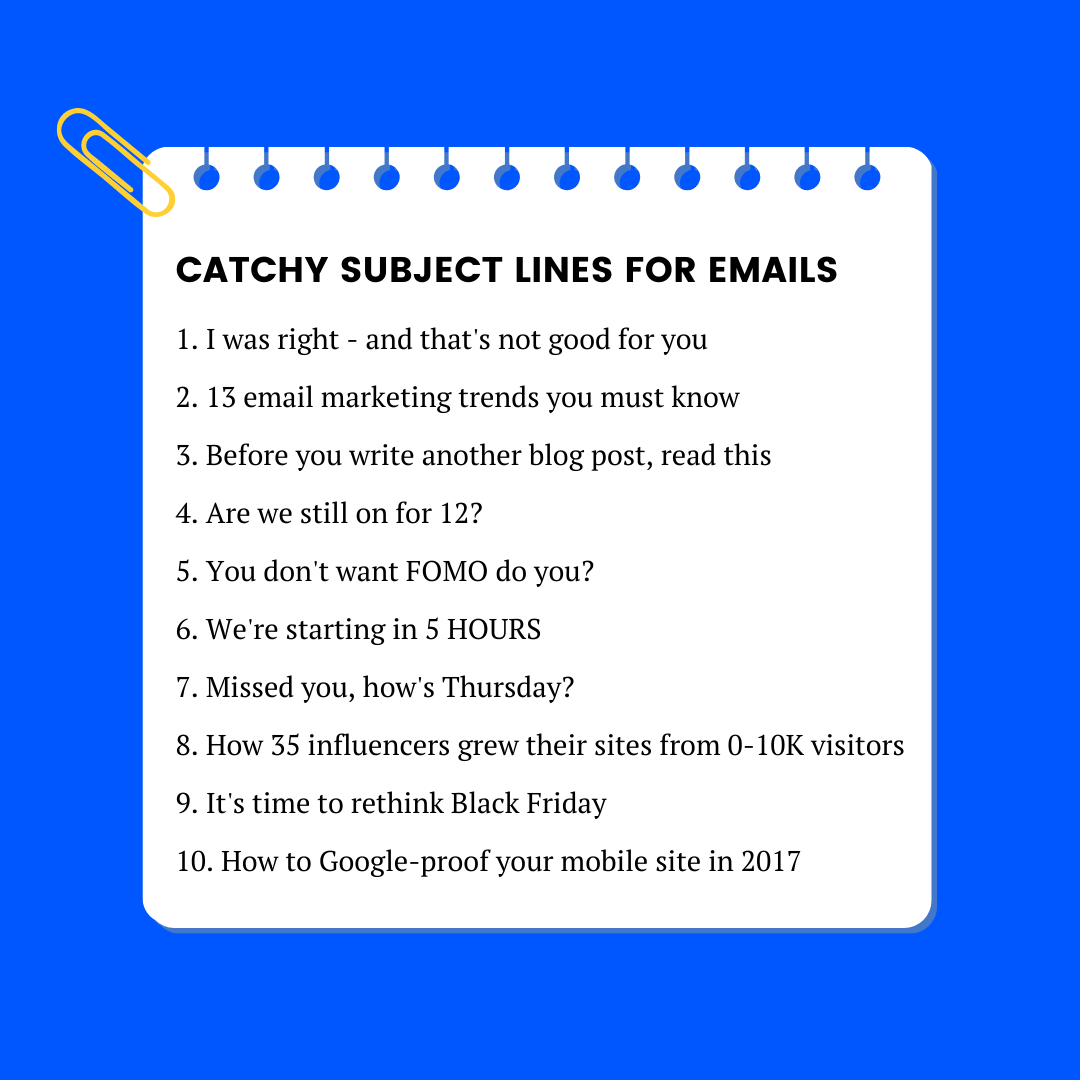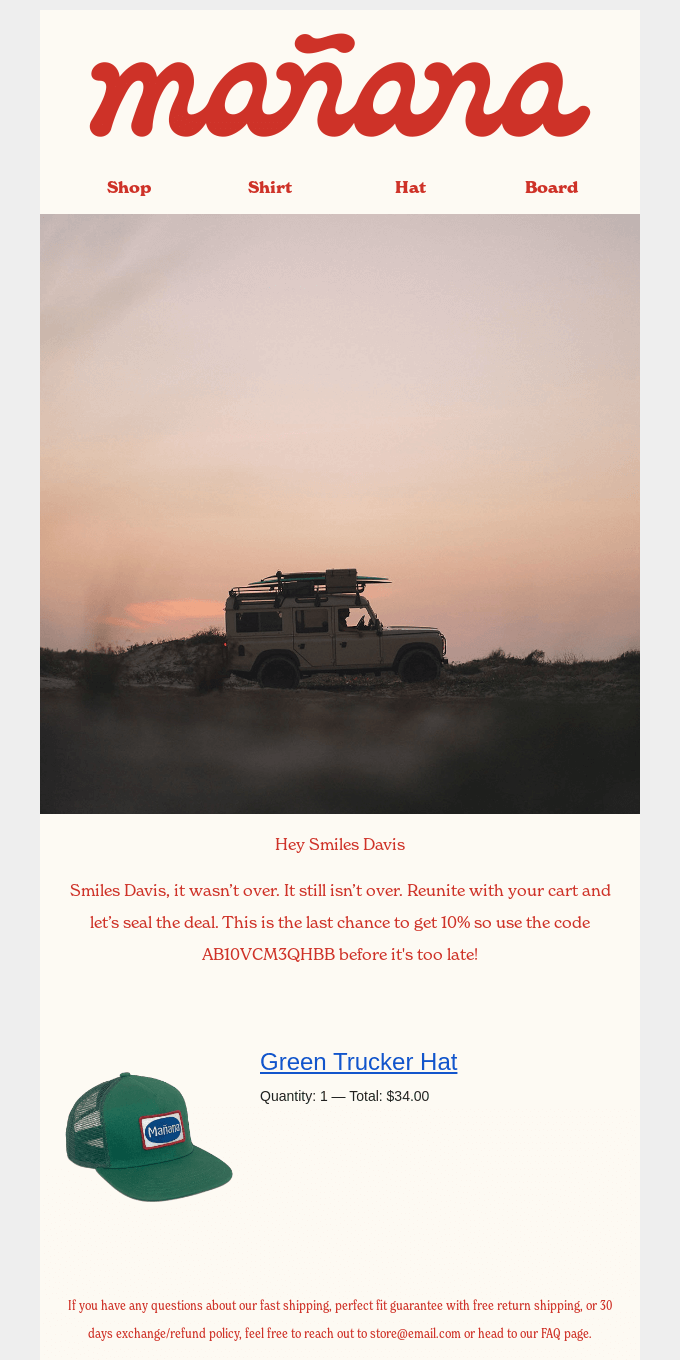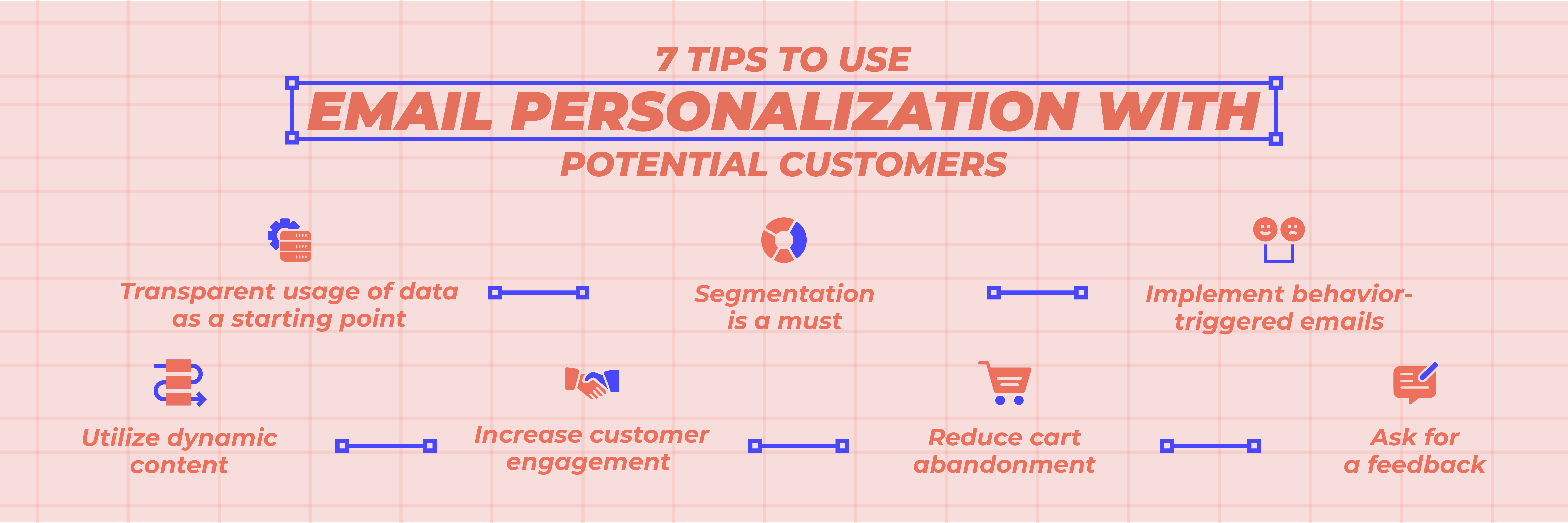

Last updated on
June 23, 2023
Email marketing success necessitates planning. A critical step towards your email strategy is to develop a personal connection with your customers. By cultivating long-term relationships with customers, you'll be able to reap greater financial rewards. Approximately 3.7 billion people used email three years ago, and according to Statista, this figure will rise to 4.7 billion by 2022. This demonstrates the significance of expanding your email marketing strategies, including personalized email service.
But before digging in, let’s understand what email personalization is in content marketing. Email personalization is targeting an email campaign to a specific audience by using the data and information you have gathered about them, such as their interests (products or services they like), behavior (no. of app visits, last purchase, demographics (gender, age, location), etc.
And let’s face it, we all love to get special treatment from brands that we have subscribed to, such as they tell us about what other products we might be interested in based on our previous choice or asking us if everything is okay since we abandoned the cart and closed the website. So, personalized emails go a long way.

Since email personalization is quite clear now, let's see what a personalized email is. Three main elements make up a personalized email:

A personalized email consists of content relevant to the subscriber. For example, if a subscriber is interested in DIY projects, sending them an email newsletter about easy DIY wall ideas increases the likelihood of the reader interacting and engaging with the email.
A personalized email is always timely because, by gaining insights about the subscribers’ behavior patterns, you know the kind of content they need at a particular stage of their customer journey with you.
As opposed to an email from a business, people are likelier to relate to an email sent from a person. So, using names and faces in emails can create an instant connection.
The data your customers or leads provide can help you create tailored experiences. Similarly, you can use that information to write emails that stand out in the inbox with highly-personalized offerings.
According to Adage, when marketers were asked which capability they would prioritize in marketing in the future, 33% of them answered “personalization.” Moreover, According to Experian, personalized marketing emails generate 6x higher transaction rates than emails that are not personalized.
Hence, all budding marketers should look to incorporate personalized email campaigns in their marketing schedules.
With personalized email marketing, companies can look to implement a more consumer-centered style of communication. Here are a few tips that can help you to create personalized emails:
Email segmentation refers to dividing subscribers that have something in common into individual segments. The segmentation criteria include age, gender, demography, geography, buying habits, and preferences.
Let’s say that you sell women's apparel in the USA. You should segment your email list to contain only women to personalize your email campaigns. Similarly, if you sell sunscreen in the USA, then you might want to target people living on the west coast, as they are the ones who go to the beaches more frequently.
Here is a guide on how you can segment your email list.
Personalizing your subject lines can have a positive impact on the recipient and can help in building trust. They will think that they are receiving an email from a friend.
Triggered emails have changed the game of how brands interact with their customers. Triggered emails combined with personalized content can help you get higher engagement on your emails. Also, it helps in creating trust between you and your customers.
Here’s a guide on how you can create triggered emails with Mailmunch.
You can aid your personalization efforts for the future by adding a “manage preferences” section in your email footers. For example, if you have an eCommerce store, then adding a preferences section can help your subscribers choose what emails they are most interested in receiving.
Doing this will give you data that you can use to personalize the email they receive, resulting in increased engagement not only with your emails but with your brand in general.
It’s good practice to lay in front of your customers your privacy policy and explain how you will use their data to personalize the emails they will receive in the future. It will not only help you build trust with your customers but will also help in setting expectations.
Personalization tactics develop deeper connections with your customer and create high levels of engagement. Here are eight personalization strategies to make your email campaigns successful.

When your subscribers know from whom they are going to receive the email, they will be more trusting of your emails and will be less likely to mark your emails as spam.
Personalized emails increase the open rates by 26%. Bold, dark, and heavy subject lines tend to stand out among other email details. Choose a conversational subject line that intrigues interest and raises questions to attract the reader. Besides, emojis are said to impact the open rates of emails significantly.

Your email copy should relate to your subject line. It won’t do much good if your subject line is about Valentine's day discounts and, in the email copy, there is no mention of any discounts.
Moreover, keep your email content short and sweet, but keep to the point. According to a study, email copies with 50 to 125 words had response rates above 50% compared to emails with 200 words and a response rate of 48%.
The content in your email should be about what the recipient is interested in. For example, if a customer is interested in buying overcoats for the winter, your email should promote the benefits of buying overcoats from your store.
Using high-quality and relevant images in your emails, based on behavioral data of your customers, can add that oomph that your emails need. You can use PNG images because they are of the highest quality.
Check out his guide to learn more about embedding images into your emails.
Email marketing personalization and automation can encourage customers who have already interacted with you to return—for example, sending automatic reminders to subscribers to avail offers, special promos, etc., or asking for feedback. It is one of the best ways and the finest chance to impress your subscribers.
Developing special offers for loyal customers is a great way to personalize emails for conversion. Marketing automation sends a series of VIP offers to the best and most loyal customers once they’ve reached a special status triggered by a specific purchase value.
Here’s an example to inspire you.

It’s a known fact in the eCommerce industry that cart abandonments are inevitable, and not every time it’s the eCommerce store’s fault. Sometimes the customer gets distracted, loses interest, or simply, runs off time to complete the purchase. Here’s where personalization comes in to save the day.
Personalized emails can be used, in tandem with triggered emails, to inform customers of their abandoned carts. As soon as a customer abandons their cart, your abandoned cart workflow should kick in, sending emails with personalized offers to make the customer complete the purchase. You can offer discounts and offers to entice the customer into completing the purchase. Here’s an example

The primary source of collecting data for email personalization should start working as soon as the customer shows interest in your business: the email subscribe form. Add a few additional fields in your email subscribe form that is relevant to your business, and use the provided data to personalize subsequent emails.
Also, you can add gamification elements in your subscribe forms, like in the example below.

Integrating your email marketing tool with your CRM can help you keep track of your customer's email engagement rates and obtain additional insights that will allow you to personalize your campaigns.
Mailmunch can integrate with CRMs like ActiveCampaign and Mailchimp, which will import the name and emails of your subscribers as well as other information like location, status, the total number of orders, the amount spent, etc.
A lot of information is stored in third-party apps that aren’t integrated with either your email marketing tool or your CRM. So, using an API can help you get access to this data and also in creating customer segments for effective email campaigns.
Website activity tracking can open a world of opportunities for you to collect data that can be used for personalization purposes. This data can help you in crafting cart abandonment emails, dynamic content, product recommendation emails, and discount offers.
Here is a list of inspiring personalized email examples you can model your campaigns on.
This example from Cole Hann is a good example of how shoe brands can personalize their emails to fit the needs of their customers. In this email, the recipient is seeing shoes that they might have shown interest in during browsing their online store.

In this email, Airbnb shows a classical example of personalization based on geographical segmentation. Recipients who are visiting San Francisco and using Airbnb will get this email tailored to them to find the best experiences in the San Francisco area.

Netflix, in this email, is suggesting to a recipient what they should watch based on their previous viewing history. This is a fine example of using in-app data to personalize recommendations.

Dominos is using a recipient’s order history to remind them that they can win a free pizza if they can get 60 points, of which they currently have 10. Also, they are recommending a few pizzas to the recipient.

Honey, an extension that helps you find coupons on the internet, is recommending a recipient a price drop on a shirt using the user's data.

Forever 21 in this email is showing a recipient a dress that they might have found interesting. This is a great example of segmentation based on gender.

Another example of personalized emails based on gender segmentation, this email from All Things Hair is aimed at women looking for tips and tricks on hair care.

Aesop’s Mother's day gift recommendation email is a fine example of a personalized email. Subscribers looking for a perfect Mother’s day gift can benefit from this email.

Personalized based on user data, this email from Framer is a personalized example of an onboarding completion reminder email.

Francesca’s product recommendation email is an example of how to offer personalized product recommendations to your customers based on their product viewing history.

This cart abandonment email from Fender can inspire you to create personalized emails that will compel your customers to complete their purchases.

In this email, Made In Cookware is offering its customers custom engraved knives for Christmas. This is a great example of personalizing your emails for seasons and holidays.

Another example of using user data to personalize emails, this email from Sling is telling the recipient of what their top shows where in 2021.

Pinterest leads the way in terms of providing personalized content to its users. And this email is not far from what they usually do. In this email, they are showcasing a recipient a Pinterest board based on their search for geometric designs.

Pulp & Press’s product recommendation email is personalized for the recipients who are interested in losing weight. You can ask for data from your subscribers and customers and use it to craft emails such as this.

With just only the search result, “little black dress,” Fashion Nova has created a personalized product recommendation email for its interested customer. Also, the recipient can easily purchase the dress by just clicking on the CTA labeled “Get it now.”

To inspire loyalty in its users, Salesforce is offering rewards in this personalized email. It’s also a great example of a re-engagement email.

Drizly’s personalized email for a customer’s “half birthday,” is a great example of showing loyalty towards your customers. They are also showcasing the recipient’s favorite drinks to entice him to take action.

One thing is to understand the concept of email personalization; another is to put it to strategic use for your company's growth. To start, check out these seven pointers for incorporating personalized content into your next email marketing campaign.

Consumers are apprehensive about their privacy and the possibility of losing personal data. Fortunately, according to a 2020 Formation study, 81% of the 2000 questioned customers are prepared to supply basic personal details to get a more personalized experience. They are not free, though - consumers expect businesses to use their user information to provide them with high-quality, customized content in return for the data they've shared.
Judging by the same report, 83 % of shoppers are more ready to reveal their info if the organization they are communicating with is transparent about that data usage. That means people are okay with sharing their personal information, but only if they have consented and know how it will be used.
To successfully manage user information, you should create a data strategy. Customer-centric planning is required to identify the critical points about the customer. Afterward, you'll be able to start gathering the data, whether through web analytics, customer profiles, questionnaires, or past purchasing behavior.
Once the data has been obtained, it has to be easily accessible and analyzed. The only way to deliver a personalized and relevant customer experience is with the quality of the data - precisely, a clarified, contemporary single-customer view that informs you about everything you need to know about a consumer.
To satisfy your customers, you must offer more than one solution that fits everyone's needs and wants. You should develop distinct customer segments centered around their demographics and preferences. You can then use these segments to email your clients potential relevant and customized deals and suggestions.
As reported by a survey conducted by Econsultancy, segmentation is the primary focus for over 1000 advertising, digital, and e-commerce experts. Furthermore, 72% of these specialists used customer data to make segments. The survey also reveals that segmentation is a top priority for even the lowest-performing businesses.
Knowing what your clients are interested in will show them that you value them. Unsurprisingly, 59% of people who have had personalized experiences claim that it greatly affects their purchasing decisions. To get the most out of your email campaigns, you'll need to divide your recipients into groups based on shared traits.

You can categorize your customers based on their purchase history, location, age, or job role. With these divisions, you can delve deeper and move ahead with more targeted messages.
Once you've finished segmentation, it's time to apply dynamic content. Dynamic content can be defined as HTML within your email that alters based on the end-actions, users, and preferences. The simplest form of dynamic content is using a merge tag in your email provider to draw your reader's first name into your message.
Personalizing your emails with dynamic content may be easier than you think. While a lot of your personalization capabilities will be based on the data you obtain, there are some fundamentals you can learn immediately.

Sending messages based on essential demographic information (age, gender, location, background, profession, etc.) is a great way to start engaging your audience. Changing your communication based on demographics will depend on the information you have and how your offer relates to various types of people.
Many companies provide their subscribers with an opinion center where they can select the kind of content they want to see. You could advise your audience to select their preferences in your welcome emails - or you can include a section at the end of each email that enables clients to alter their choices. It becomes immediately relevant when you make dynamic content based on your subscribers' interests.
Using email tracking to control dynamic range is highly effective. What people open, click on, and read provides you with precise insights into their interests. Suppose your earlier emails included different types of content or topics. Your upcoming email should contain a dynamic range centered around your audience's previous clicks.
For example, the team at the online jigsaw site, Im-a-puzzle began sending emails with personalized suggestions of new puzzles based on past ones the user had completed. As a result, their return user rate improved by over 10%.
You can create a more genuine and customized experience for your subscribers with behavioral emails.
Did someone visit the link to the upcoming panel discussion? This indicates that a user is interested in the topic. This reflex can be programmed into your platform (behavior). Boost subscriber engagement by mailing a series of follow-up messages, which will pique subscribers' interest, especially if, within those emails, you have powerful CTAs to nudge them to take action.
With a behavior-driven framework, you can customize your email correspondence. If regular subscribers last saw your emails or browsed through your website a while ago, your platform may respond automatically based on this activity (or lack of activity).

Did someone look at the piece of clothing but then give up on their quest? There are a plethora of reasons why the shopper could have become distracted. Set up action-driven emails to remind consumers about the products they appear interested in.
However, remember that there is such a thing as too many reminders - keep your subscribers manageable because that can be counterproductive.
A practical method of demonstrating that you understand your customers' wants and needs is to make customized suggestions on what they should buy based on their previous purchases. For example, you can send out an email about details or deals on associated or complementary products. To succeed in making customized suggestions, you can rely on customer behavior analytics data you can gather using website tracking tools.
You can also take it further and send guides with details on related products or accessories. For instance, if someone purchases a piece of clothing from your shop, email a stylebook on how to assemble a complete outfit using that piece and other goods from your store.
This is an excellent strategy for demonstrating that you recognize what they want and boosting revenue. Guidelines and tutorials can persuade consumers to buy a few of the other products you've suggested in your emails.
Another advantage is that you can save your clients' time because they don't have to spend a few hours browsing your store searching for a complete matching look. Infosys research shows that 96% of people want brands to assist them in discovering new products to some extent.

Include special occasions in your email marketing campaigns to keep things extra special for your readers.
You should take advantage of any specific date. Metrics and your email marketing platform are working hard behind the scenes to ensure that you provide a personalized message when someone reaches an anniversary date with you or has a birthday coming up.
If you're just getting started with milestone campaigns or need more user data to work with, sending birthday or anniversary emails is an excellent place to start. For this kind of message, you only need your client's birthdate or the date they signed up for your email list, which you can obtain when they subscribe using a basic form.
In many circumstances, an email could appear to be a one-sided dialogue. You may avoid client turnover by encouraging your subscribers to participate in this digital conversation with you. You could invite them to share their comments on the content contained in your email. You can also use questionnaires to collect more information about the goods or services your subscribers are most interested in, which also helps you with segmentation.
If you serve the B2B market, everyone on your subscriber list is facing a challenge or attempting to achieve a goal. Consider some common points and create a poll that will only take your subscribers a few minutes to complete.
When it comes to business-to-consumer transactions, you have a lot of freedom in creating surveys. Use your imagination to evoke responses that will provide you with information about your subscribers' buying preferences. It can pave the way to even better segmentation-based personalization.
Everyone wants to be seen as a unique personality with their characteristics, wants, needs, and life experiences acknowledged. We all respect it when someone knows our name, achievements, and preferences. Customers feel the same way and applaud when a company understands and caters to them personally.
With a strategic technique and suitable email personalization tools that meet your company's needs, you'll see an increase in engagement, brand recognition, and revenue.
Aqsa Mughees works as a Content Lead at Mailmunch with 5+ years of experience in creative content strategy. With a grip in digital content creation for the tech industry and an undying love for writing, she is crazy about helping businesses grow through content marketing.
Tags:

M. Usama
April 19, 2024

M. Usama
April 19, 2024

M. Usama
April 18, 2024